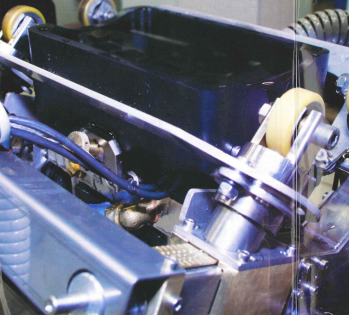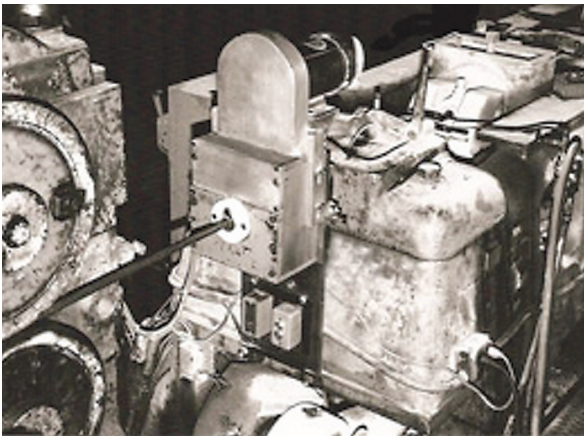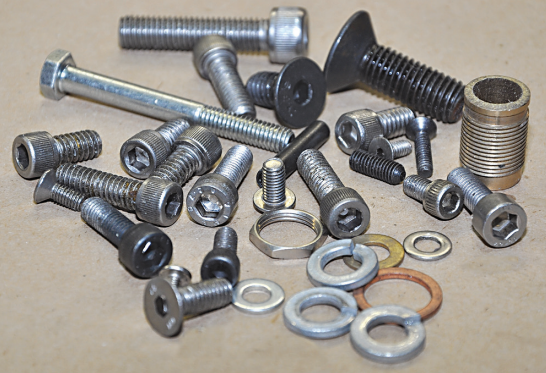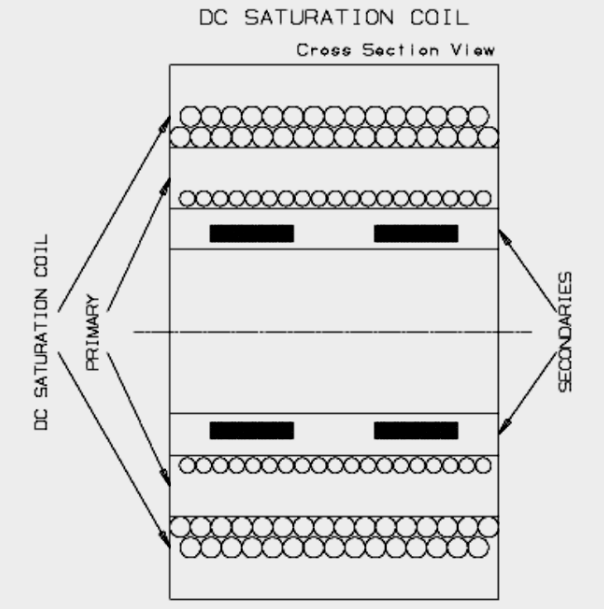STAINLESS STEEL WORLD AMERICAS DECEMBER 2013
Since being founded in 1928 in Long Island City, New York, Magnetic Analysis Corporation (MAC) has 85 years of experience in the nondestructive testing (NDT) industry. As one of the first companies in the world to develop a fully computerized rotary eddy current tester, MAC is truly a world-class NDT pioneer. Today, MAC's eddy current, flux leakage and ultrasonic testing technologies are used all over the world, providing satisfactory solutions for the diversified requests of metal fabricators.
Daisy Liang from Stainless Steel World Asia recently spoke with MAC's Global V.P. of Sales, Mr. Dudley Boden and Global Operations Advertising Manager, Ms. Paloma Domenico, about the company's rich history, its groundbreaking technologies and its unique after-sales service.
By Candace Allison

An NDT innovator
Dr. Charles Burrows, a former physicist from the US Bureau of Standards, coined the term “magnetic analysis.” He defined it as the investigation of the mechanical properties of a material exclusively through its magnetic properties. Several years and new patents later, Dr. Theodore Zuschlag, a German engineer, refined Burrows’ work. In 1934, he helped MAC develop and manufacture the first successful electromagnetic tester in the US, which detected defects in steel products. Union Drawn Steel in Hartford, Connecticut became the first company to install the new tester in 1936.

After this initial success, MAC spent six years transforming NDT theory into applicable equipment and in 1953, produced the first commercial eddy current tester. This tool was the very first of its kind in the world and at the time represented a remarkable advance in NDT technology. The tester worked by measuring the electrical conductivity of the material it was testing, resulting in a reliable investigation of any surface defects.
In 1959, MAC launched the first rotary eddy current tester. It was able to detect continuous long surface and subsurface defects of both wire and bar products. Only nine years later, the first eddy current tester with phase and filter control functioning was introduced. It had a much higher sensitivity in terms of detecting signals and noise in the product.
Over the last four decades of the 20th century, MAC continued to develop innovative products. In the 1970s the rotary flux leakage tester was launched. It could detect defects in heavy-wall magnetic tubing such as oil county tubular goods (OCTG). Then in 1992, the fully computerized eddy current tester was introduced, taking eddy current technology to a whole new level. Today, MAC's eddy current, flux leakage and unique ultrasonic technologies are used all over the world in a variety of industries.
NDT methods
MAC's core business centers on manufacturing NDT equipment. NDT includes any method of testing that does not change the characteristics of the actual material in any way. These are the preferred testing methods because the material can be then used or sold after testing, unlike destructive testing, which permanently damages the material. NDT methodologies include ultrasonic testing magnetic flux leakage (MFL) testing, eddy current testing, infrared and thermal testing. MAC's array of professional NDT equipment testing products detect flaws, cracks, internal pores, bubbles and any other defects in a variety of metals without interfering with the core structure of the material.

Ultrasonic testing
This type of NDT sends high-frequency sound waves into the tested material and then detects the reflected signal to determine if there are any internal flaws. It uses transducers, in a coupling medium like water, that produce high-frequency sound waves or mechanical vibrations, which travel through the water and into the duplex stainless steel tube being tested. Any anomalies in the tube’s wall will send a portion of the sound wave back to the transducer triggering a gate or alarm.
In 2005, the American Petroleum Institute (API) revised its inspection standards on oil and gas and coal-chemical pipes and bars, requiring all material to go through at least two different non-destructive tests. This increased the popularity of ultrasonic testing. It is also frequently used to measure a tube's wall thickness or the diameter of a steel bar.


MAC's flexible Echomac® Ultrasonic Systems Rotating ultrasonic transducers can be used with rotary ultrasonic test heads or along with other kinds of test heads. MAC has also just designed a specialized mechanics that can house ultrasonic transducers, among other technologies that can inspect tube ends and spinning tubes.
Magnetic flux leakage testing
This technique is used to test magnetic grade steel by magnetizing a pipe and then passing a coil or other type of detector around the pipe. If there are defects in the pipe, more of the magnetic flux will “leak” out of the material and be detected by the coils. MAC's Rotoflux® Flux Leakage Tester is used for the detection of outer surface, internal and subsurface discontinuities in magnetic steel tubular products of uniform cross sections like seamless or welded tubing. Due to the high demand for carbon steel pipe and bar in the oil and gas field such as high pressure, sour gas and offshore and artic wells, flux leakage is a preferred inspection method.
Eddy current testing
With this method, a high frequency electrical signal is passed through a coil that is positioned near the surface of the material being tested. The coil generates a magnetic field that then creates eddy currents, small electrical currents in the material. As a result, these currents affect the coil in different ways depending on the type of surface defects being found. Defects may deform the eddy current in the surface of the tested material and change the primary magnetic field generated by the test coil. In this case, the electronics will detect the variation in the current and then trigger the gate or alarm.

Specifically, MAC's MultiMac® eddy current electronics can be combined with various Rotomac® rotary test heads or many other different coils and coil platforms. It is most frequently used to detect surface defects in tube and pipe, bar stock or wire products at production speed for both ferrous and nonferrous materials.
The benefits of NDT
When discussing the merits of the above three techniques, Mr. Boden said that: “Ultrasonic testing is the best method to detect internal cracks as well as lamination. Flux leakage testing is capable of inspecting materials with thick walls or larger diameters. Eddy current is one of the least expensive and easiest techniques. It’s very capable and commonly used to test stainless steels and is also very good for high-speed testing.”

Mr. Boden explained that “certain grades of stainless steels and duplex stainless steels tend to be ‘noisy,’ which can generate false signals in the eddy current testers.” Ms. Domenico added, “When we discuss noise, we refer to the signals generated in the electronics due to the material composition of the tube or bar being tested. We have been able to overcome this through the use of magnetic saturation and proper selection of frequencies, filters, bandwidth, etc.”
Mr. Boden went on further to mention that by using MAC’s eddy current comparator, engineers can find relatively low levels of sigma phase in the material. They can also use a group of samples with different sigma phase levels as bench markers to quantify the sigma phase levels in the material being tested. He clarifies, “MAC testers can be used to test all grades of stainless and other specialty alloys.”
Depending on the product, like a bar or tube, the test allows manufacturers to identify discontinuities, seams, cracks, slivers and other defects that may affect the quality and performance of the final product.
Actually, NDT is capable of inspecting most categories of metals. Flux leakage is most widely used in OCTG, but the ultrasonic and eddy current techniques can be widely applied in most applications.”
After-sale service
Ms. Domenico explained that MAC even customizes systems to conform with an industry’s stringent requirements, which is beneficial to the nuclear industry for example. She maintains that, “What sets MAC aside from other NDT suppliers is its ability to customize a solution for each and every client. None of the systems are identical. As well as providing the complete customization, MAC also offers full range of service and support for all its equipment.”
MAC employs approximately 150 employees worldwide, including a network of highly trained field engineers, who can assist with NDT application, training and/or service needs onsite at a plant or facility anywhere in the world. These services are unique to Magnetic Analysis Corporation, as no other major NDT supplier has a field staff of highly trained field engineers available to assist with personal service before and after the sale. As Ms. Domenico explains, “By taking advantage of the localized after-sale service teams.. MAC provides direct, on time response and onsite after-sale service."





